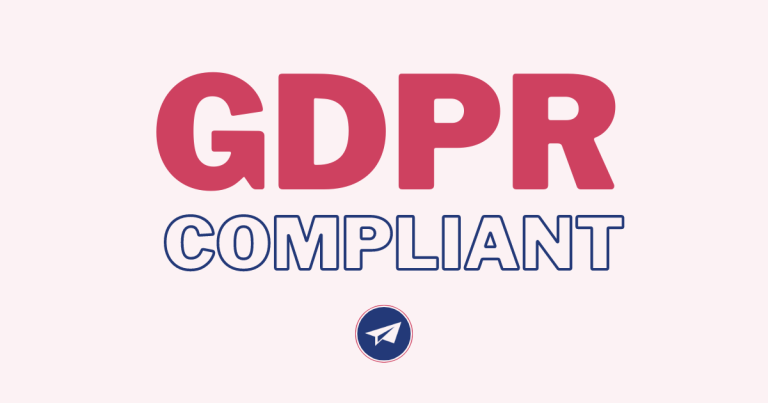The size and structure of your team significantly impacts the efficiency and effectiveness of customer service.
Support needs vary greatly depending on industry, business size, product, or service, so it’s natural for many organizations to find it challenging to choose the proper customer service structure that meets expectations.
In this article, we are discusing the most critical considerations to determine the right organizational structure for your support department.
Let’s get started.
Why bother with choosing a customer service organizational structure?
Aside from directly impacting the efficiency and quality of support you provide, your customer service structure can also be the difference between a satisfied client base and a frustrated one.
Nowadays, customers expect prompt, efficient, and personalized service that meets their needs. This was not always the case. In the past, customer service meant a hotline that directed callers to a support center where buyers could exchange items, file a return, or ask inquiries. But, with the advent of technology, the customer service landscape has changed dramatically.
Customers now have more channels to reach out to businesses such as phone, email, chat, social media, and even messaging apps like WhatsApp and Facebook Messenger. This proliferation of channels led to a change in customer behavior. Customers now expect businesses to be fast and available 24/7. Statistics show that people want customer service that meets them where they are and provides them with assistance.
- They expect a response within 10 minutes or less, and
- They are likelier to stay with brands that respond within a minute.
This behavioural shift has put a lot of pressure on businesses to revamp their support strategies. They need to adequately prepare teams to handle customer requests through different channels and structure them in a way that allows them to provide quality support across all mediums.
Customer service structure as an element of customer experience
At a glance, customer service may be part of your customer’s overall experience. However, this short interaction has the power to make or break your business, as shown in the data below:
- After one unpleasant customer experience, around 61% of customers said they would shift to a different brand.
- Around 80% of consumers indicate they prefer to conduct business with a competitor after having more than one negative experience.
- 91% cite excellent support as a reason for making another purchase, making customer service a significant factor in purchasing decisions.
- 95% of consumers say customer service is crucial for brand selection and loyalty.
- People are 38% more likely to recommend brands with good customer service.
When you do not do customer service right the first time, you must exert effort to make it up to your customers. Otherwise, you would lose them for good, which is bad news, as acquiring a new customer means spending 5 to 25 times more than keeping an existing one.
Hence, every aspect of your business should be customer-service friendly, especially your support team structure. This facet has to be highly capable of handling client interactions, particularly in addressing issues or channeling customer feedback to the appropriate team leads.
Customer service structure as an aspect of company culture
The structure of your support team must allow openness, cooperation, and efficient communication to deliver superior assistance and keep loyal customers. It should also promote a customer-centric culture. That way, you can avoid the typical service mistakes that lead to churn.
Having a support team structure in place creates clear expectations for every person in the team, establishing a hierarchy that enables everyone to understand their roles and responsibilities and who to contact when they need assistance. This management approach can also provide these advantages:
- More job opportunities for a variety of positions, from entry-level to management roles
- Maximized efficiency and effectiveness, brought by increased accountability and collaboration
- Smoother workflow due to established tasks and expectations per person
- A proper hierarchy, setting a robust chain of command in place for an appropriate escalation of incoming requests and decision-making.
What factors affect the organizational structure of customer support?
Before we discuss the different types of customer service organizational structures, you first need to know and understand the factors that affect them:
The size of your business
The size of your business is one of the deciding factors when it comes to the structure of your support organization.
Start-up
You may not need a huge team if you’re still in the startup phase. With a small customer base, you can choose to outsource support or build a team with 3 to 5 people. However, as your business begins to grow, you will eventually need to hire customer service representatives (CSRs).
Though small, your support team structure must be lean and adaptable especially as you might not have the financial ability to employ many agents yet.
For this reason, your small team of CSRs must be proficient in various areas. In addition, this team should also have access to the proper tools and software to automate different elements of customer care, such as routing support requests, monitoring support channels, reacting rapidly to comments, and providing the material that helps enhance customer satisfaction.
Growing business
Once your business starts scaling, your customer service structure should follow suit.
You have to hire more people and divide your team into smaller groups so every cluster or sub-team can manage a specific area of interaction, such as phone support, social media care, or live chat. You also have the option to categorize them based on your customer’s journey stage.
Additionally, you might need to assign a customer service manager to lead and oversee the entire support operation — a step that guarantees that your team structure remains aligned with the goals and objectives of your company.
Enterprise
Now that you’ve reached the enterprise level, you need a more complex team structure to support a large client base. This type of business is also more likely to achieve global reach, so you must consider time zones when providing support.
Companies with this amount of resources must commit time and effort to develop an integrated support team. These organizations can structure customer service by utilizing geographic areas, distribution platforms, and buyer experiences comparable to mid-level enterprises. However, enterprise-level organizations must be more specific regarding methods and strategies as the number of people they need to respond to is much larger.
The industry you’re in
The hospitality industry, for example, is customer-facing and needs to provide support 24/7. On the other hand, a manufacturing company may have an operational team that provides support during regular business hours. There are certain customer service components that are heavily impacted by the industry in which you operate and, as a result, you have to adapt you support’s organizational structure to reflect that. Some of those components include
Customer service quality standards
The type of customer service can also affect your team’s organizational structure. If you’re a company that prides itself on providing excellent customer service, then you need to have a customer support team that can deliver on that promise.
Meaning your customer service structure should be able to handle a large number of customer inquiries and complaints. It should also be able to provide support in multiple channels rapidly.
To do this, you need to have a customer service team that’s large enough to handle the volume of customer inquiries and complaints. You also need a proficient team in different areas, such as product knowledge, technical support, and customer service.
Customer expectations
Finally, you must consider your customers’ expectations when determining your support team structure.
Nowadays, customers expect prompt and efficient customer service. Once a problem arises, they expect to be able to reach your support department in every channel you’re in, receive an answer almost immediately, and achieve a good and consistent experience that reflects your brand, values, and promised quality of service.
That being the case, your team should be able to efficiently organize their tasks and responsibilities, which is why they need the best tools, systems, and resources in place to help with day to day operations.
Technological advancements
Years ago, companies could only offer support through phone and email. However, there are many ways organizations can respond to customer inquiries and concerns today, which is why customer service teams need to be adaptable to technological advancements.
With the rise of artificial intelligence (AI), businesses can provide better service. AI can help you:
- Automate specific tasks, such as responding to inquiries and complaints, which allows you to free up time for your team to focus on more complex tasks.
- Collect and analyze customer data. You can use this data to improve the experience and provide a certain level of service
- Personalize the customer experience. By using AI, businesses can create a profile for each of their customers and then use that information to provide them with an experience that genuinely responds to their needs.
The makeup of your support team
The final factor you need to consider in determining an organizational structure is the makeup of your support team.
- Are they all full-time employees?
- Do you have any remote customer service agents?
- How many customer service agents do you need in each shift?
Answering these questions can show how each person can help and contribute to covering all your customer service needs. Plus, by considering other factors like their abilities, motivations, and work habits, you can identify what combination of customer service team structures will work for your business. Let’s take a closer look:
Skills, competencies, etc.
When determining the proper support team structure for your organization, you must also consider your team’s skills and competencies to establish whether they can deliver the kind of service your clients expect.
Examine the strengths and weaknesses of everyone on the team to figure out where you can provide additional support to strengthen brand perception and service quality.
Let’s say that your service team performs exceptionally well. If that is the case, you may want to focus on training them on upselling and cross-selling products and services. But, if your team is weak in product knowledge, you may consider holding more training and hiring additional agents who are knowledgeable in your product line.
Performance drivers
In addition to skills and competencies, you must assess what drives your team members.
- Are they motivated by money?
- Do they prefer working independently or as part of a team?
- Do customer satisfaction scores drive them?
By understanding the motivations behind your team’s performance, you can better structure their roles and responsibilities to substantiate that they’re able to meet your customer’s expectations while at the same time boosting agent engagement.
For example, if your agents is motivated by money, you may want to consider commission-based compensation structures. On the other hand, if your team members prefer working independently, you may want to consider giving them more autonomy in their roles.
Practices and processes
The last two factors you must examine are your company’s practices and processes.
- Do you have any existing systems or tools in place?
- Do you have standard operating procedures (SOPs) set in place?
- Do you outsource any of your support tasks?
The answers to these questions can help you structure your team to benefit your business the most. For instance, if you have existing systems and tools in place, you might want to consider how and in what areas your help desk team can use them to improve efficiency.
How to structure your customer service team
Here’s how you can structure your customer service in just five steps:
Define your goals
The first step in determining the proper support team structure for your business is to define your customer service goals. These will serve as the foundation that will guide the rest of your decision-making process.
To proceed with this step, think about what you want to achieve.
- Do you want them to increase sales?
- Improve satisfaction scores?
- Decrease churn rates?
Once you’ve defined your goals, you can start thinking about how to structure your customer service team to achieve them.
Select an organizational structure
Let’s examine some structures that you can pattern your customer service team from.
Product-based
Companies with a product-based customer service structure divide the entire department into subteams, each with a distinguished product line to focus on, resolve issues, and answer queries about.
An example of a product-based business is Apple, a famous brand with many separate customer service teams for the iPhone, iPad, and Apple TV.
This structure also applies to organizations that make or carry products in various sectors, like conglomerates, such as The Walt Disney Company, which produces movies and has theme parks and resorts.
Market-based
In a market-based structure, the brand organizes the customer service department into teams based on a target market. So, each team would be responsible for servicing a specific group or type of customer.
Examples of a market-based structure are banks that focus on small businesses, middle-market businesses, and large corporations. The customer service teams in each bank are structured to support the needs of their specific target market.
By geographical area
You can divide your customer service department by geographical location, with teams servicing customers in particular countries or regions.
This type of structure is common for companies that do business internationally, like McDonald’s. Each country or region has its customer service team to support the local customers.
Top-down
In a top-down structure, the support department is operated according to the company’s hierarchy, with each unit reporting to a manager who reports to the customer service director. Small to medium-sized businesses often practice this structure as they don’t need a large, complex customer service department.
Non-hierarchical (flat)
A non-hierarchical or flat organizational structure has no defined management levels. Teams are self-managed, and everyone reports to the customer service director.
You can often observe this structure in startups and small businesses. It’s less common in larger organizations because managing a more extensive customer service team without a hierarchical structure can be more challenging.
Function-based
Here, the company divides the customer service department into units based on specific functions. Each team is responsible for a different aspect of customer service, like billing, technical support, or product returns.
An example of a function-based support team is Amazon, which has teams responsible for different functions like Whole Foods, Amazon Web Services, and Amazon Prime.
Matrix
A matrix structure happens when many customer service teams fall under a single department head.
If Samsung had a matrix structure, this would mean that their smartphones, home appliances, semiconductors, memory chips, and other products would have special sales, marketing, and service departments.
This structure enables each support team to be highly specialized for each product the firm offers, but it can also result in brand fragmentation.
Circular
A circular organizational structure is very similar to a matrix because there are still different marketing, sales, and service teams. However, each team reports to a board of directors or an executive committee instead of one department head.
Organizations with this structure try to decentralize power or decision-making. When examined closely, this structure facilitates collaboration and the exchange of ideas between different business components. It places executives in the inner rings of a circle while employees are outside the rings.
Leaders in the organization’s center do not issue instructions down like a chain of command but outward. Unlike the other structures listed above, the circular structure does not include various departments that function independently. In this structure, everyone works as a part of a single unit.
Identify team roles
Now that you know the different organizational structures available, it’s time to start building your team.
However, before hiring, you need to identify the most fundamental roles in a customer service team. Again, these roles may vary depending on the size of your team and the type of service you provide. However, the prominent positions in a support team structure usually include the following:
Customer service manager
The manager is in charge of leading and managing the team. They’re also responsible for
- Creating and executing service policies, procedures, and standards within the workplace
- Liaising between the support team and other departments in the company
- Working with the marketing, sales, and product teams to ensure that the service team has the resources and information they need to perform their tasks
- Creating the customer service budget
Customer service representative
A customer service representative embodies the company for many customers. They handle inquiries and complaints. Hence, these people need to have excellent customer service skills. They must be, for example, capable of
- Resolving customer issues professionally and efficiently
- Exhibiting product knowledge so they can answer questions about the company’s products or services.
Technical support specialist
A technical support specialist provides help for customers facing technical issues with the company’s products or services.
Technical support specialists need an in-depth knowledge of the company’s products, including its how-tos. They also need to be able to troubleshoot customer issues and find solutions quickly.
In some cases, technical support specialists may also be responsible for training customers on how to use the company’s products.
Account manager
The account manager manages customer relationships by working closely with customers to ensure they’re satisfied with the company’s products or services.
Account managers work with the customer service team to resolve customer issues. In some cases, they may also be responsible for upselling customers to higher-priced products or services.
Monitor performance KPIs and reevaluate
You need to set some performance KPIs for your customer service team. These KPIs will help you track and measure the team’s progress and identify areas that need improvement. Some of the most common metrics and KPIs include:
Net Promoter® Score (NPS)
Your NPS signifies your customers’ willingness to recommend your company’s products or services to others and it measures customer experience and predicts growth. It involves asking your customers how likely they are to recommend the company on a scale of 0-10.
Customer satisfaction
Your customer satisfaction rate measures how satisfied your clients are with the service they receive.
Data gained from this KPI can help you understand which service areas need improvement.
Average Handle time
The average handle time determines how long it takes for an agent to resolve an issue.
This information can help you understand if your team members need more training or if you need to streamline some aspects of your internal processes.
Customer retention
Customer retention indicates how many customers continue to do business with a company after experiencing a customer service issue. Knowing your customer retention rate helps with understanding the effectiveness of your customer service team as a whole.
First Contact Resolution
Your first contact resolution rate indicates how often your representatives can resolve customer issues upon the customer’s first contact with support.
This key performance indicator shows how efficient your customer service team is and how knowledgeable they are in addressing and resolving concerns.
6 Reasons Why You Need a Knowledge Base
Plan for change
Even if you think you already have the perfect organizational structure, you must always be prepared to make changes when necessary. As your company grows, your team will need to grow with it, which means you may also need to make changes to the department’s organizational structure as you learn what works and what doesn’t.
Here are some of the reasons that might require you to rethink the structuire of your support team:
Scaling your support operations
If your company is doing well, as you scale operations you might need to change the way you organize your team to be able to handle more customers and solve their problems quickly.
You may also need to adjust upon learning that some parts of the service process need improvement.
New technology and AI
In the future, using high-level technologies like artificial intelligence might mean that some roles in the customer service team are no longer needed, like data entry.
You may also need to change your present organizational structure to accommodate this change.
However, embracing new AI technology may also mean the addition of new managerial roles that can help with training and problem-solving, which usually happens when agents need help with learning and using new technologies.
Unforeseen developments
Unexpected things, like the COVID-19 pandemic, might cause some changes in the way businesses establish support teams. Nobody knows what’s in store for the future, and that’s especially true for businesses.
So if your company fails to prepare to adapt to the changes in the marketplace, it will eventually die. One way to prepare for change is to have a flexible organizational structure that can easily be adapted to new challenges.
Did you like the post?
You might also like:

Surveypal
Everything you need to lead and improve your customer experience. Learn more at surveypal.com, or








